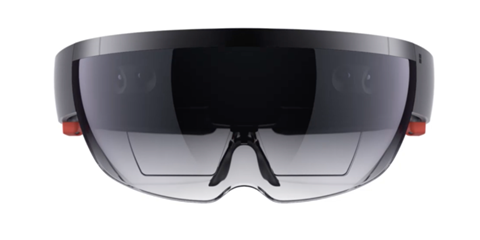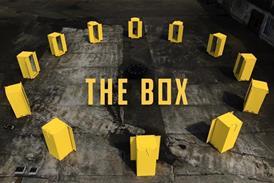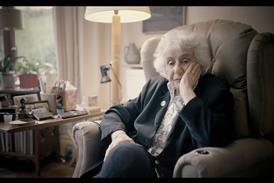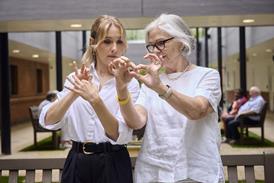Advances in mixed reality technology is moving apace, with the HoloLens providing a glimpse of the future

Tom Smith, co-founder and creative director of immersive content agency FX Digital on the advances being made in Mixed Reality (MR) technology.
Our R&D department has been experimenting with various AR technologies for a while now, but what’s getting really exciting is Mixed Reality (MR), which blends the best aspects of both VR and AR.
MR bridges the gap between the physical and virtual worlds, integrating believable, virtual objects into the real world environment.
Microsoft’s HoloLens (pictured above) really stands out. It’s packed with technology that enables the device to have a detailed understanding of the real-world environment through spatial mapping, which provides a detailed representation of real-world surfaces around the HoloLens.
It allows for some amazing effects such as ‘object occlusion’, adding an extra layer of realism as holograms interact with the physical world. Closing a real world door, for example, could hide a hologram that’s three metres in front of you.
The tracking is also incredibly accurate, using two low-resolution cameras to record local features. This information is then blended with inertial measurement unit (IMU) data to determine the precise position of the device. It’s so accurate that no matter how rapidly you move your head, holograms stay locked to their position in real-world space preventing “swimming”.
Along with spatial mapping, the HoloLens has advanced gesture and speech recognition built in, enabling you to interact with experiences in a naturalistic way.
HoloLens has already been integrated within the engineering, educational and medical sectors. The ultimate goal is for the technology to become a valuable tool in how we interact and view information in isolation or as part of a collaborative experience. Be it a 3D plan of a power plant, mapping MRI scans to patients, or training mechanics on how to replace brake pads with holographic overlays.
The HoloLens has so many possible use cases it’s down to developers to educate business in the technology and find deficiencies in their processes that can be improved with the use of mixed reality experiences.
MR will become more and more integrated into our everyday lives as headsets improve and the case studies grow. Now is an important time to understand the development process, limitations and future applications for MR devices such as the HoloLens, as the technology is rapidly improving and adoption rate increasing.
It’s inevitable the way we interact with technology will change. Right now we’re used to having a physical device but as AR, MR and VR headsets improve eventually we will see these becoming less intrusive and more integrated as part of our everyday attire.
In the not too distant future we may even see immersive technologies integrated into contact lenses as seen in the Netflix series Altered Carbon.

































No comments yet